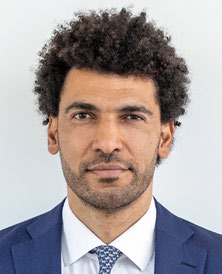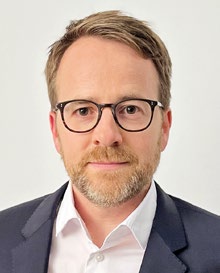A patent infringement action – before the German courts or before the UPC – only has a chance of success if the plaintiff can prove the facts of infringement disputed by the defendant. If the actual embodiment of the challenged embodiment is not fully known and a sample is not or not yet available on the market, it is advisable to obtain evidence by means of an independent evidence procedure.
The independent evidence procedure (according to the Düsseldorf Model [§ 140c PatG] or according to Art. 60 UPCA) offers an opportunity to establish facts, secure evidence and obtain a court expert opinion. It can precede an intended infringement action in order to better assess its prospects of success.
Furthermore, an independent evidence procedure can also lead to the avoidance of main proceedings (e.g., because the parties already reach an agreement on the basis of the expert opinion or because the inspection eliminates the facts of the infringement). The person of the expert is likely to be decisive for an agreement between the parties. The expert’s expertise, reputation and independence – despite the applicant’s right of nomination – often determine whether the parties accept the expert opinion and agree on a settlement to avoid a legal dispute.
The requirements for such proceedings are manageable. The cost risk is limited compared to an infringement suit. However, despite the advantages mentioned above, it is used relatively rarely in practice and could be used even less frequently in the future if the requirements for the selection of the expert are excessive.
In the following we will provide a brief overview of the essential requirements and the course of the independent evidence procedure and highlight some practical difficulties.
Prerequisites
As a rule, the patent proprietor or the exclusive licensee comes into question as the applicant for a request for inspection. The request is filed with the infringement court that would also be entrusted with any subsequent main proceedings. A certain probability of infringement of the patent in suit is a prerequisite. The validity of the patent-in-suit must also be sufficiently probable. Furthermore, any other reasonable possibility of examining the validity of the infringement allegation must be ruled out.
Course of the proceedings
Once the request has been submitted to the competent district court, the inspection order can be issued in just a few days. In this order, the court specifies, among other things, the basis on which the written expert report is to be drawn up and appoints a court expert, who is usually proposed by the applicant. An inspection appointment is then coordinated between the bailiff, the expert and the applicant of inspection (inspection creditor). From the applicant’s point of view, it is particularly charming that the inspection (according to the Düsseldorf model) – assuming a particular urgency – takes place without the defendant of inspection (inspection debtor) being summoned and heard beforehand. The resulting surprise effect reduces the risk of the defendant being able to remove evidence. A lawyer and/or a patent attorney may attend the inspection on behalf of the applicant. The applicant themself is not allowed to attend. The applicant’s attorneys are obliged to maintain confidentiality with regard to the information they obtain during the inspection.
After the bailiff has handed over the inspection order to the inspection debtor, the latter has two hours to consult their legal counsel. The court expert then begins the appraisal. The latter only has to take place to the extent specified in the inspection order. Although the inspection debtor is not obliged to take any active steps, a certain duty to cooperate is considered reasonable (e.g., the removal of access obstacles, i.e., providing keys or entering passwords, providing energy supplies or other consumables, etc.).
In the second stage of the proceedings, the court expert draws up their report. The latter is then sent to the inspection debtor in order to give them the opportunity to comment on any confidentiality interests. In addition, the report is also handed over to the inspection creditor’s attorneys, who may not, however, disclose it to their client without the court’s approval. If the inspection debtor does not claim any business secrets, the expert opinion may also be disclosed to the inspection creditor. If, on the other hand, the inspection debtor asserts trade secrets, the inspection creditor will only receive a partially redacted report. If the confidentiality interest of the inspection debtor cannot be remedied by redactions, a disputed court decision is required as to whether and, if so, in what form the inspection creditor will also be personally informed of the expert opinion. The latter will have to be affirmed if the court’s preliminary assessment confirms the suspicion of patent infringement. The independent evidence procedure ends when the expert opinion is sent to the parties. If necessary, this may be followed by an oral hearing of the expert.
The independent evidence procedure can be used to create facts quickly and easily. These facts can be used as leverage in settlement negotiations, serve as a basis for a patent infringement suit or lead to an abrupt end to the legal dispute.
Practical difficulty – is an inspection still attractive?
In addition to the advantages of the inspection procedure, however, the difficulties faced by this type of fact-finding procedure should not be downplayed. This concerns both the selection of the expert and the question of whether the inspection should generally or only in exceptional cases be carried out without a prior hearing of the defendant.
Selection of the expert
The expert – usually a patent attorney – is appointed by the court but proposed by the applicant, and they are usually accepted by the court without any further examination. As a court-appointed expert, they not only have technical expertise; they also have the necessary independence and are subject to the duty of confidentiality towards third parties not involved in the proceedings, which is necessary for effective protection of trade secrets.
Depending on the technical field of the invention in dispute, even the search for a technically qualified patent attorney can prove to be time-consuming and difficult for the applicant. The patent attorney should not be aligned with either the applicant or the defendant, i.e., must not have a conflict. These may arise not only in relation to the applicant/defendant, but possibly also to suppliers or customers. If the patent attorney acts as an expert witness, they will be barred from both the active and passive process, not only at present but often also for the future. Consequently, the search for an available patent attorney can be difficult. In addition to the necessary technical understanding and expertise to gain a comprehensive picture of the possible infringement in a short time, numerous candidates are eliminated, especially as the remuneration or compensation of the expert is often disproportionate to the actual effort involved.
The question of whether the proposed and selected patent attorney is too “well-disposed” or too friendly with the applicant or the legal representatives, or whether they “owe a favor” to the lawyer or patent attorney representing the applicant, is often disputed. In other words, whether there are sufficient reasons that, in the eyes of a reasonable party, are likely to cast doubt on the impartiality of the expert, whereby purely subjective and unreasonable ideas such as excessive mistrust are not sufficient. If the requirements made of a “neutral” expert were to be set too high and the integrity of the expert were to be denied prematurely and without concrete evidence, there would presumably be little room for the selection of a suitable expert, especially as the expert would then regularly have to fear that they would also have to provide lengthy explanations as to why they are not biased or why there is not even the appearance of bias.
If every patent attorney with whom cooperation has already taken place in the past or is conceivable in the future were to be excluded as an expert witness in principle for fear of bias, this could reduce the circle of possible expert witnesses to virtually zero, considerably restrict the inspection procedure and also restrict lawyers’ freedom to exercise their profession.
Of course, this does not mean that bias or even the mere concern of bias should not be avoided in every case. This applies to special close relationships, the appearance of which can arise, for example, from joint presentations by judges and lawyers at law firm events. Objectivity and impartiality are absolutely essential for judges as well as for experts in the context of expert activities. However, both here and there, it is important to warn against sweeping condemnations. It is important not to lose sight of reality and to strike a balance.
In the context of balance, one should probably also think about the consequences: What is the consequence of a courtesy opinion? Not only is the reputation of the patent attorney at stake, that of the attorney involved is as well. In addition, the underlying objective to avoid further litigation paving the way for settlement discussions cannot be achieved if the expert is obviously biased. It should thus be in the very interest of the applicant to suggest a patent attorney as a technical expert that passes the test of being biased, thus providing for a reliable expert opinion that is objective, reliable and technically convincing for both parties.
High bar according to Art. 60 UPCA?
Before an inspection order is issued, the alleged infringer could be heard in order to introduce confidentiality interests into the proceedings in good time and from the affected side. However, this will rarely serve the interests of the applicant. Granting the right to be heard entails the risk, which can hardly ever be ruled out, that the subject matter of the inspection will be changed so that the originally infringing condition can no longer be determined in an inspection following the hearing. In contrast, the court’s prohibition of the inspection debtor from making unauthorized changes to the object of inspection offers only limited protection.
The easier it is to eliminate the infringing condition and the more difficult it is to identify the unlawful manipulations in retrospect, the less protection there will be.
In contrast to the German procedure for the preservation of evidence, which as mentioned earlier regularly takes place without a prior hearing of the party liable for inspection, the counterpart in Art. 60 UPCA provides that a hearing of the opposing party is only waived if “in particular where any delay is likely to cause irreparable harm to the proprietor of the patent, or where there is a demonstrable risk of evidence being destroyed”. Only in the case of irreparable harm and a demonstrable risk of evidence being destroyed will the defendant not be heard (see also RoP 197). It remains to be seen whether the courts will lean towards the German model in future and regularly refrain from hearing the opponent or whether this will become the rule. So far, the UPC has used the ex parte option.
While the bar under Art. 60 UPCA with regard to “irreparable harm” and the “demonstrable risk of evidence being destroyed” appears to be set somewhat higher than in the German inspection procedure, it is something that can be overcome by the applicant.
In conclusion, the independent evidence procedure is a tool available in particular in cases when establishing the facts and proving infringement is impossible for the applicant, because the actual embodiment of the challenged embodiment is not fully known and a sample is not or not yet available on the market. While the requirements for such a proceeding are manageable and cost risk is limited, there are certain pitfalls and challenges the applicant needs to be aware of.
Author
René Okoampah, Dipl.-Ing.
df-mp, Munich
Patent Attorney, Partner
Author
Dr. Peter Koch, LL.M. (Trinity College Dublin)
PENFORCE, Munich
Attorney-at-Law, Managing Partner



